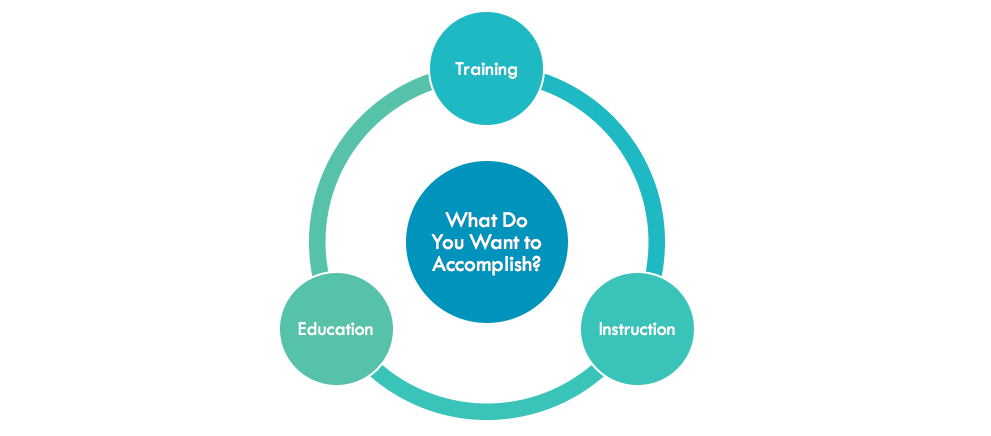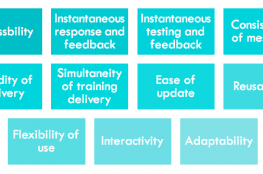This is the first in a series building on the core concepts explored in Telling Ain’t Training. Click here to read the rest of the series.
Understanding Your Learner – What’s Your Approach?
When designing trainings, how often have you considered the learner? And in what capacity? Do you think about your delivery method? What about the classroom environment? A dozen things might go through your mind as you work off of your mental checklist. Before we get there let’s take a moment to think a little differently about what training means and align on what it should accomplish.
What Do You Want to Accomplish?
According to the authors, what we do falls into three categories:
- Training – Is the goal to teach participants how to complete a step-by-step task?
- Instruction – Is the goal to teach participants how to react in a situation with one or more variables?
- Education – A culmination of life experiences and learning principles that go beyond reproducing or inferring; the road to expertise.
Find Your Center of Focus
Learner Centered Means Adapting
Think About It!
Humans can store massive amounts of data. The issue lies in retrieving it. Assuming that it’s relevant to the learner, then organization is the key. Consider the acronym PEMDAS and the mnemonics My Very Educated Mother Just Served Us Nine Pizzas. Can you remember what they mean? If the answer is yes, when was the last time you needed to use that information? Chances are you haven’t consciously thought about either in a long time but the information still lives on. That’s the power of organization coupled with effective teaching and the human brain.
This, of course, doesn’t mean the classes where we learned these pieces of info were perfect but rather that someone stumbled upon a great memory technique that may or may not have translated into other parts of the curriculum. For example, I can’t readily recall most of what I learned in Earth Science but I vividly remember Algebra. The teacher included hands on and group activities, employed a reward system and used visuals and audio cues to draw connections between prior knowledge and newer, more complex pieces of information.
Put it in practice!
Make a list of ways you can engage your audience. Include exercises and content that appeal to the following:
- Musical-rhythmic and harmonic.
- Visual-spatial.
- Verbal-linguistic.
- Logical-mathematical.
- Bodily-kinesthetic



